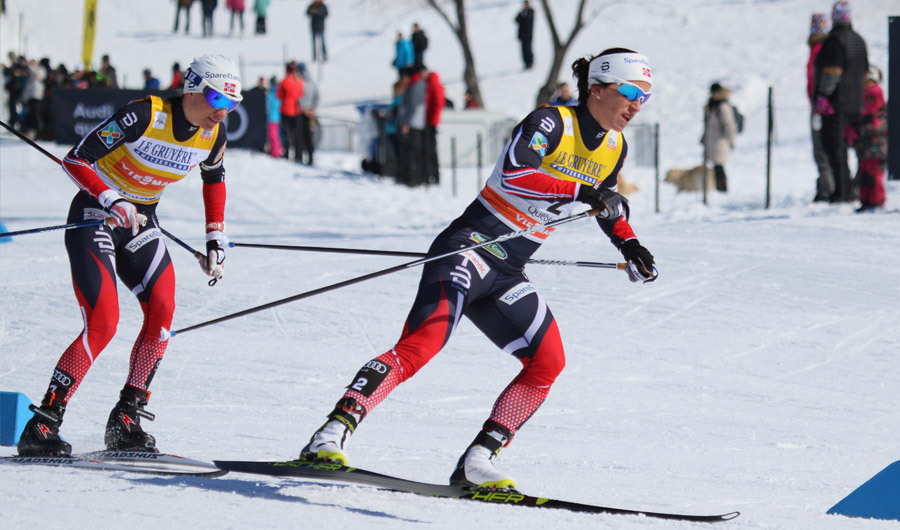Analyzing the Training of the World's Best Female Cross-Country Skier
(Inside Science) -- On Feb. 15, Norwegian cross-country skier Marit Bjørgen won a bronze medal in the 10-kilometer individual race. It was her second medal in Pyeongchang, and brought her total Olympic medal count to 12 -- more than any other female Winter Olympian has won. Researchers recently scoured 17 years of detailed training records to find insights into what made her so successful.
The results were published by a team of Norwegian researchers in December in a paper in the journal Frontiers in Physiology.
"This paper is an absolute goldmine of what is possible," said exercise physiologist Dan Heil, who was not involved in the research. "It's only now retrospectively that we see how valuable this is for Marit Bjørgen."
Olympic cross-country skiing events last from 3 minutes to nearly 2 hours and require competitors to race across flat surfaces and up and down hills as they employ the techniques known as classical and skating, as well as substyles of both throughout the different races. It's a completely unique endurance sport. The athletes that find success couple a marathoner's endurance with incredibly strong upper bodies.
It took a rare set of data to make the new research possible. The dataset begins in 2000, at about the time Bjørgen began competing in international adult races.
"[Bjørgen is] a unique subject. We found that she has really good training data for the 17-year senior career," said Guro Solli, a doctoral student at two universities in Norway and part of the research team. Solli is also a former international cross-country skiing competitor.
Using digital diaries designed by the Norwegian Ski Association and Olympic Federation, the researchers tracked Bjørgen's 8,105 training sessions from 2000-2017, capturing the amount of time she spent training for endurance, speed and strength, as well as whether that training was performed on the snow, on other surfaces using roller skis, or via running or other training methods.
"I guarantee that any and every coach from age groupers up to elite coaches are going to know of this paper and try and read it, purely to know what Marit Bjørgen has done," said Heil.
The data track Bjørgen's gradual progression from about 500 hours of training per year as a 20-year-old to about 950 hours per year at 32, a level at which she continued to train before a reduction in hours that coincided with the birth of her son in 2015.
The researchers identified such a slow and steady increase in training hours as beneficial. Building up the capacity to endure a large training load is important, Solli said, a lesson she learned the hard way during her own competitive career.
"I regret that I wasn't more patient. I think I was increasing my training too fast and I had some good seasons but then I got a lot of injuries and illness," she said. "The message to young athletes and coaches is that it takes time to develop endurance capacity, and to have the right progression in your training, too."
Other insights researchers found in the nearly two decades of training records included the finding that Bjørgen nearly doubled the number of hours per year spent strength training after reaching her largest overall training volume; that up to 25 percent of her training volume took place at high altitude camps; and that her reduction in training before competition was lower than typical recommendations found in the scientific literature.
Because this is one case study of an exceptional individual who had exceptional success, it's tough to know how much the results would carry over to other athletes, said Heil. "It would be great if we got similar articles on less successful skiers, like middle-of-the-packers or notably unsuccessful skiers."
But for athletes competing at the top levels, any new insight could be valuable.
"In elite sports the difference between the first place and the fourth place is so small, so if you're going to see the details you have to have case studies instead of group studies," said Solli.

